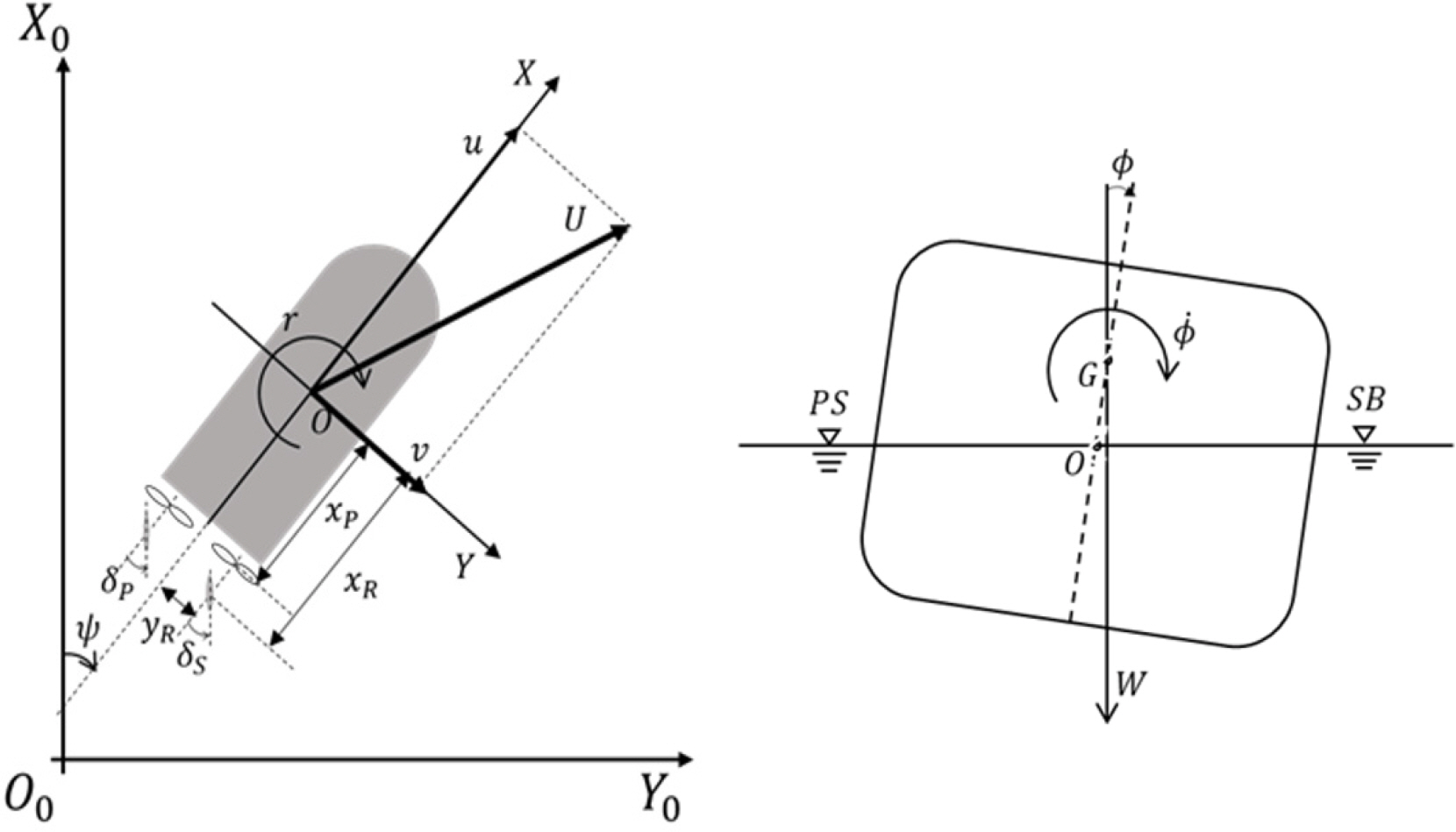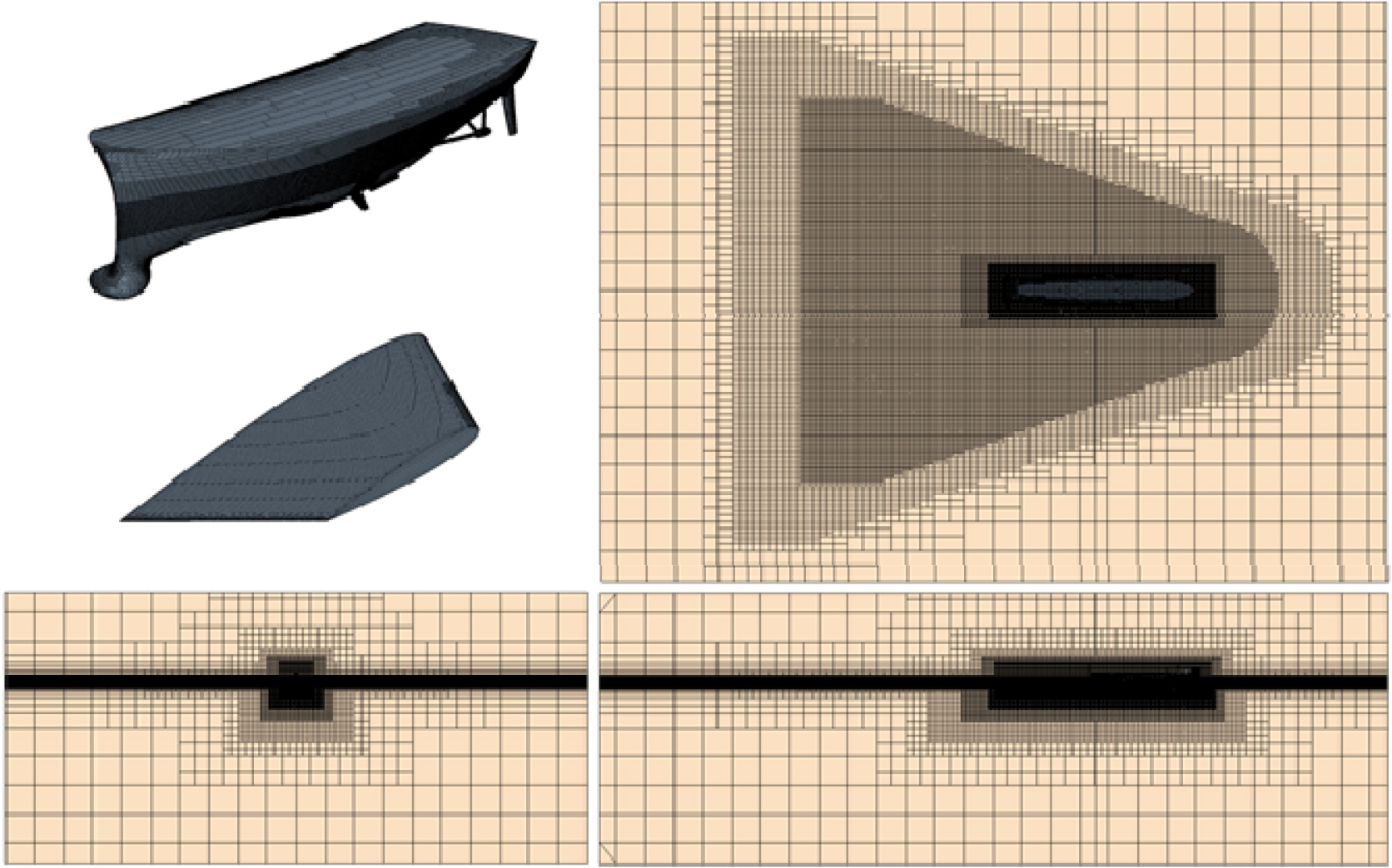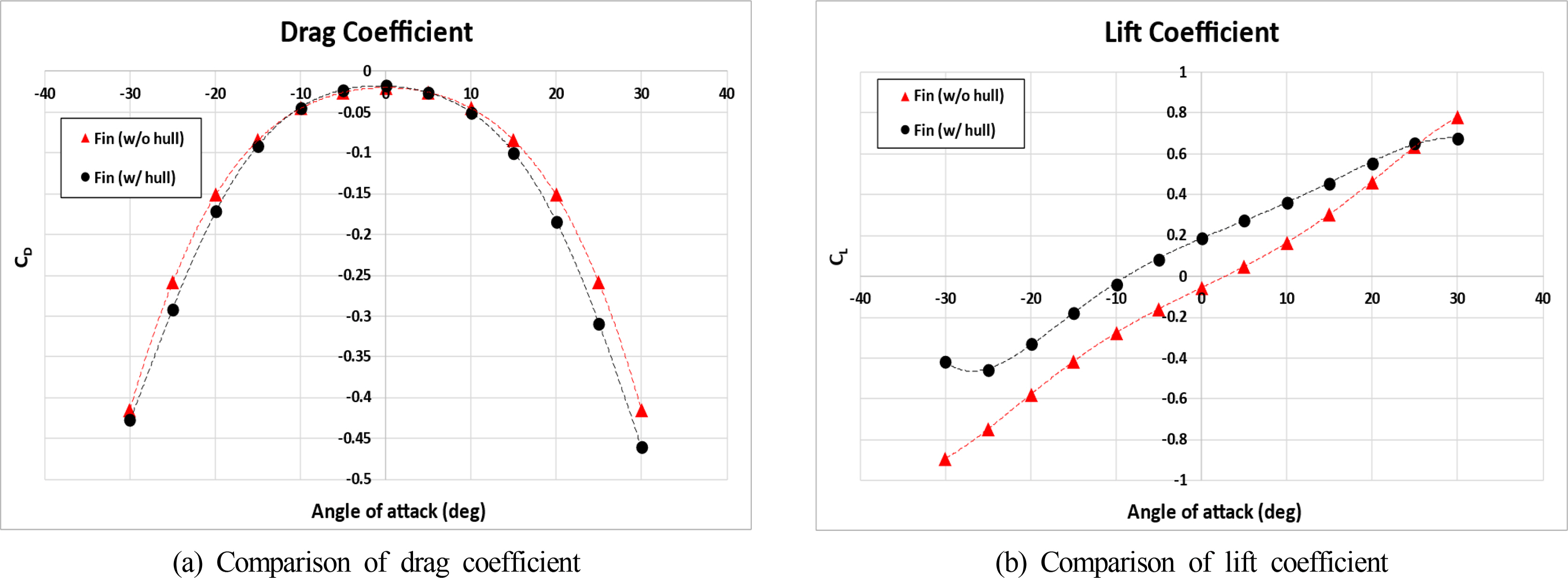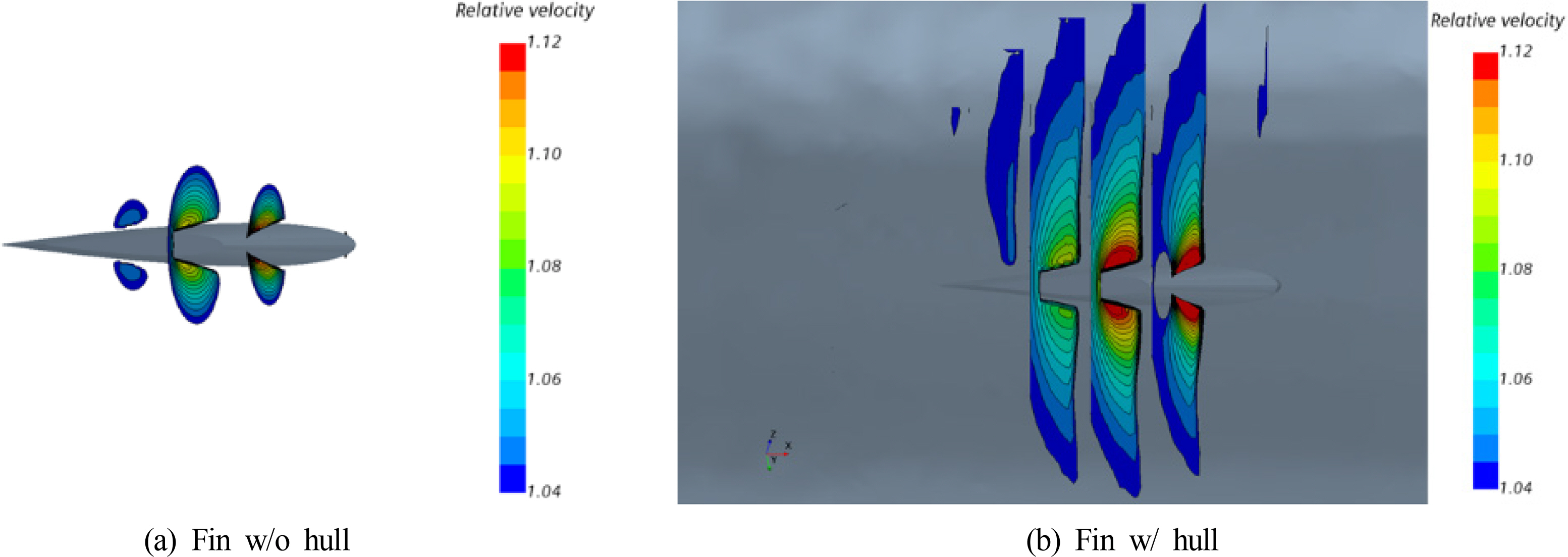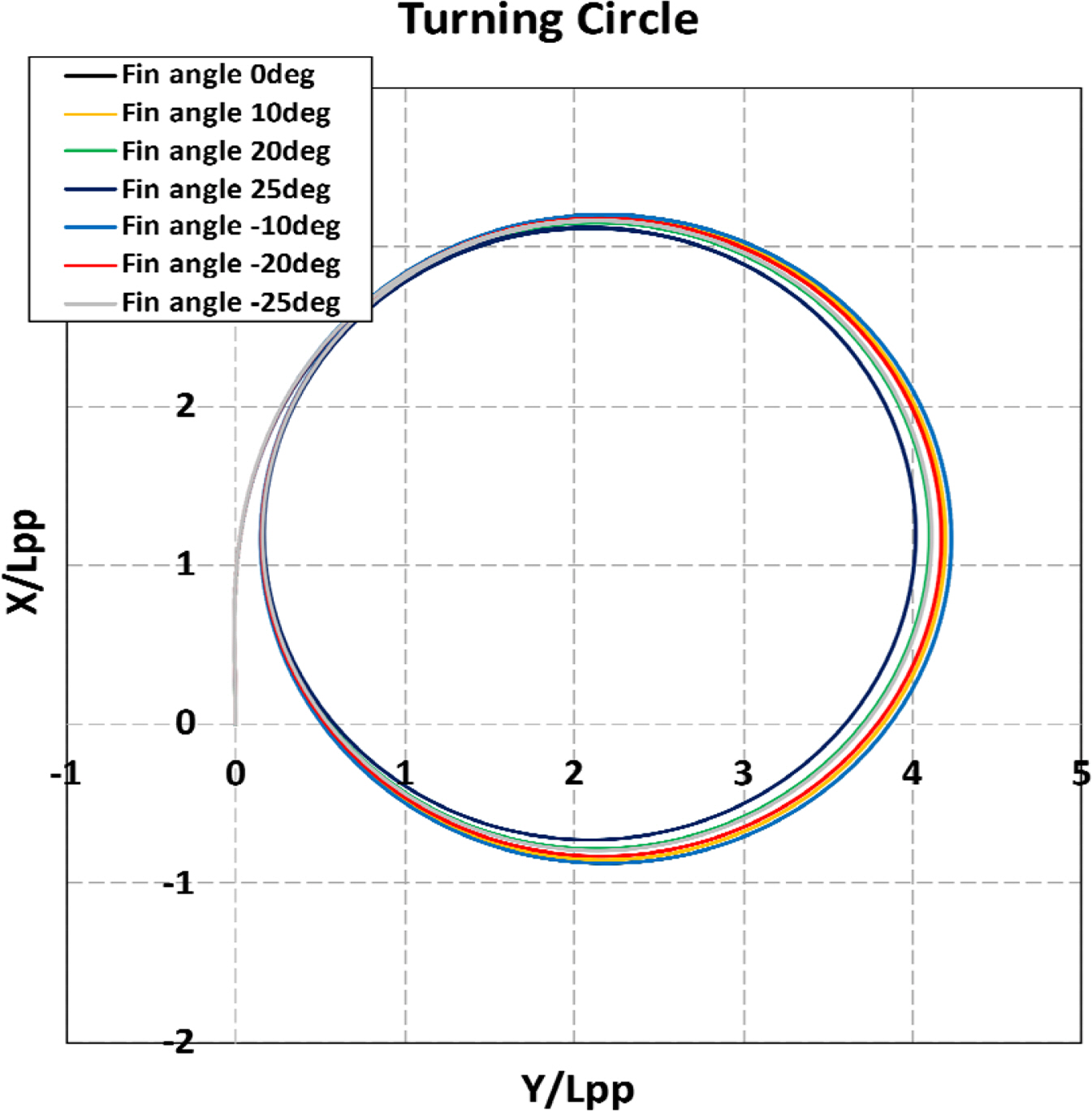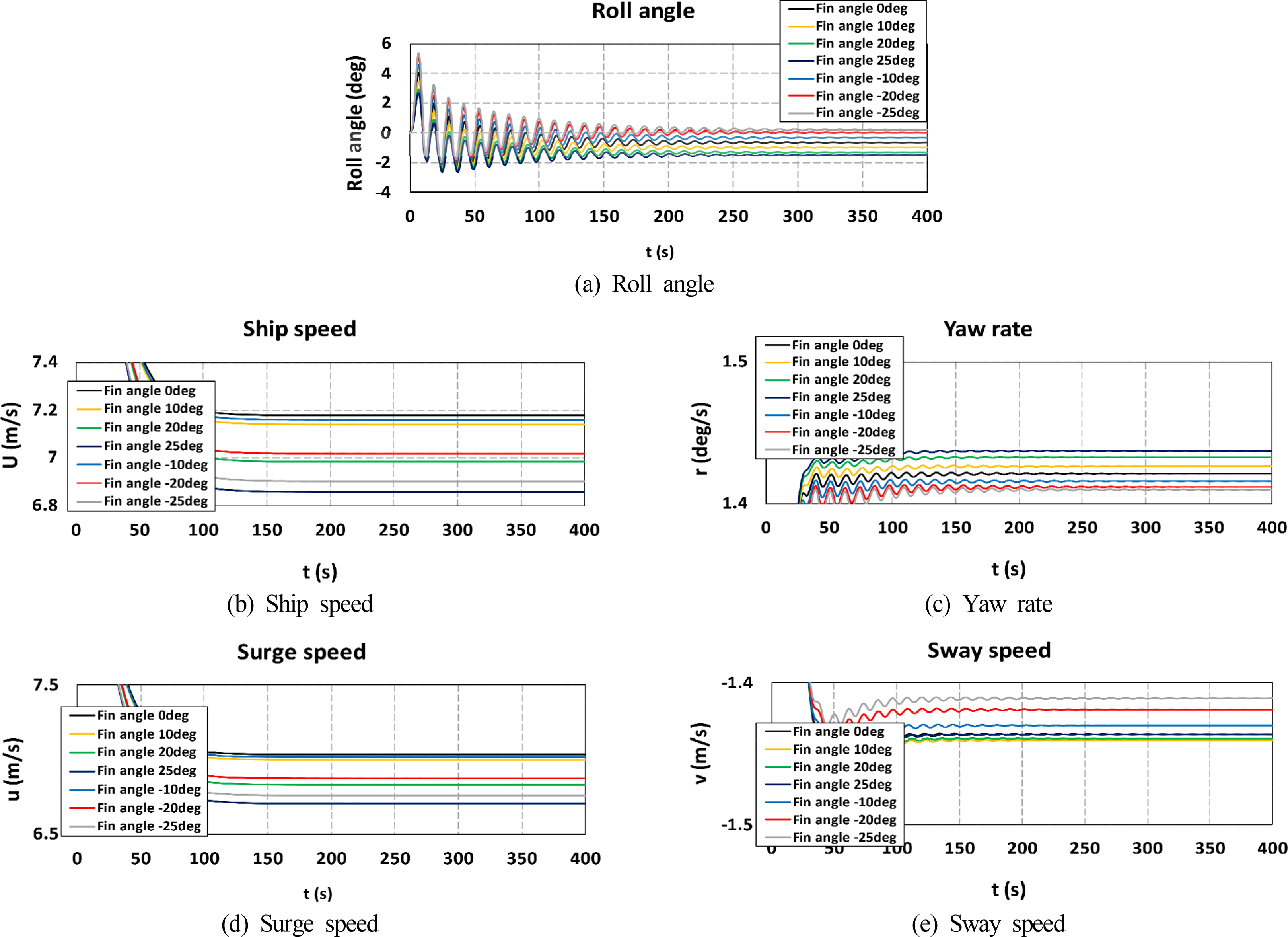Nomenclature
aH: Ratio of additional lateral force induced on ship hull by rudder action to the rudder force
CT: Coefficient of total resistance
DP: Propeller diameter
FCG: The roll and yaw arm of the fin
Fn: Froude number
FxR, FyR: Surge and sway forces acting on rudders
Ix: Moment of inertia of the ship about x-axis
Iz: Moment of inertia of the ship about z-axis
JP: Advance ratio
Jx: Added moment of inertia of ship with respect to x-axis
Jz: Added moment of inertia of ship with respect to z-axis
KH: Hull hydrodynamic moment in x direction at midship
Kfin: Hydrodynamic moment due to side fin acting on ship about x direction
Kv̇, Kṙ, Nv̇: Added moment of inertia
KR: Hydrodynamic moment acting about x-axis on ship due to twin rudders
KP: Hydrodynamic moment acting about x-axis on ship due to twin propellers
KT: Thrust coefficient
LPP: Ship length
m: Mass of the ship
NH: Hull hydrodynamic moment in z direction at midship
NR: Hydrodynamic moment due to twin rudders acting on ship About z direction
NH: Hull hydrodynamic moment in z direction at midship
NR: Hydrodynamic moment due to twin rudders acting on ship About z direction
NP: Hydrodynamic moment due to twin propellers acting on ship about z direction
Nfin: Hydrodynamic moment due to side fin acting on ship about z direction
nP: Propeller revolutions
p: Roll rate of ship about x-axis
R0: Resistance of ship in longitudinal direction
r: Yaw rate of ship about z-axis
T: Ship draft
tP: Thrust deduction factor
tR, xH: Rudder–hull interaction coefficients
u: Surge velocity of ship in x direction
v: Sway velocity of ship in y direction
vR: Sway inflow velocity twin rudders
wP: Propeller wake fraction
Xu̇ Yv̇: Added mass
XH: Hull hydrodynamic force in x direction at midship
XP: Hydrodynamic force due to twin propellers acting on ship in x direction
XR: Hydrodynamic force due to twin rudders acting on ship in x direction
Xfin: Hydrodynamic force due to side fin acting on ship in x direction
YH: Hull hydrodynamic force in y direction at midship
YR: Hydrodynamic force due to twin rudders acting on ship in y direction
yP: Offset distance of rudder stock from the ship center line
zH: Vertical distance between the acting point of sway hydrodynamic force on hull and the origin of the body-fixed frame
zR: Vertical distance between the acting point of lift force on rudder and the origin of the body-fixed frame
β: Ship drift angle
βR: Geometrical drift angle induced at the rudder position due to ship motions
γR: Rudder flow-straightening coefficients for drift angle
δ: Rudder angle
δR: Effective rudder angle where the rudder normal force becomes zero
∊: Ratio of effective wake fraction in way of propeller and rudder
κ: An experimental constant for expressing
ρ: Water density
ϕ: Roll angle of ship




